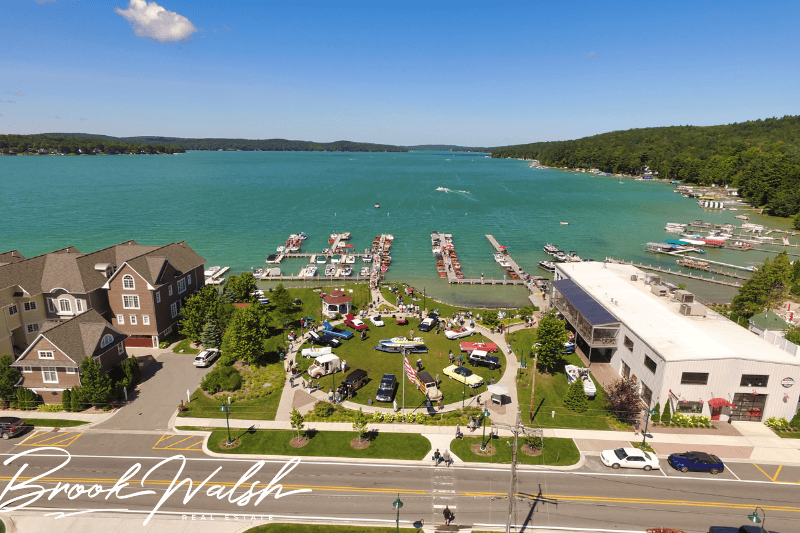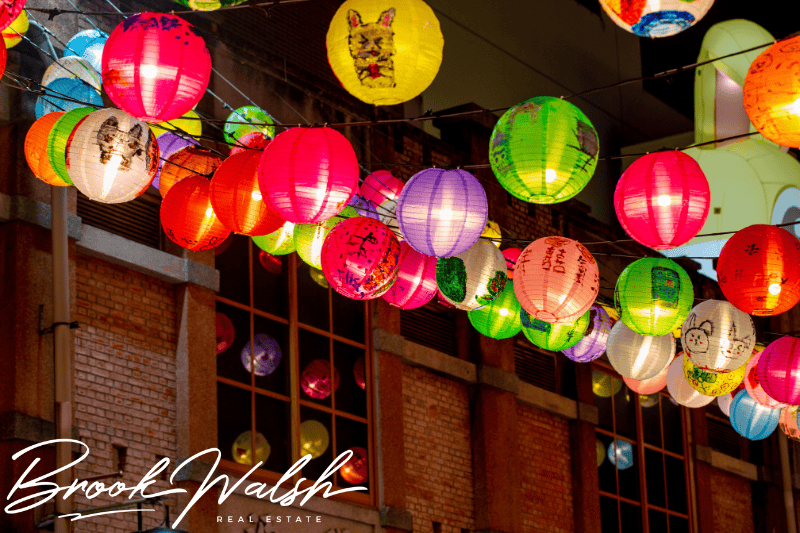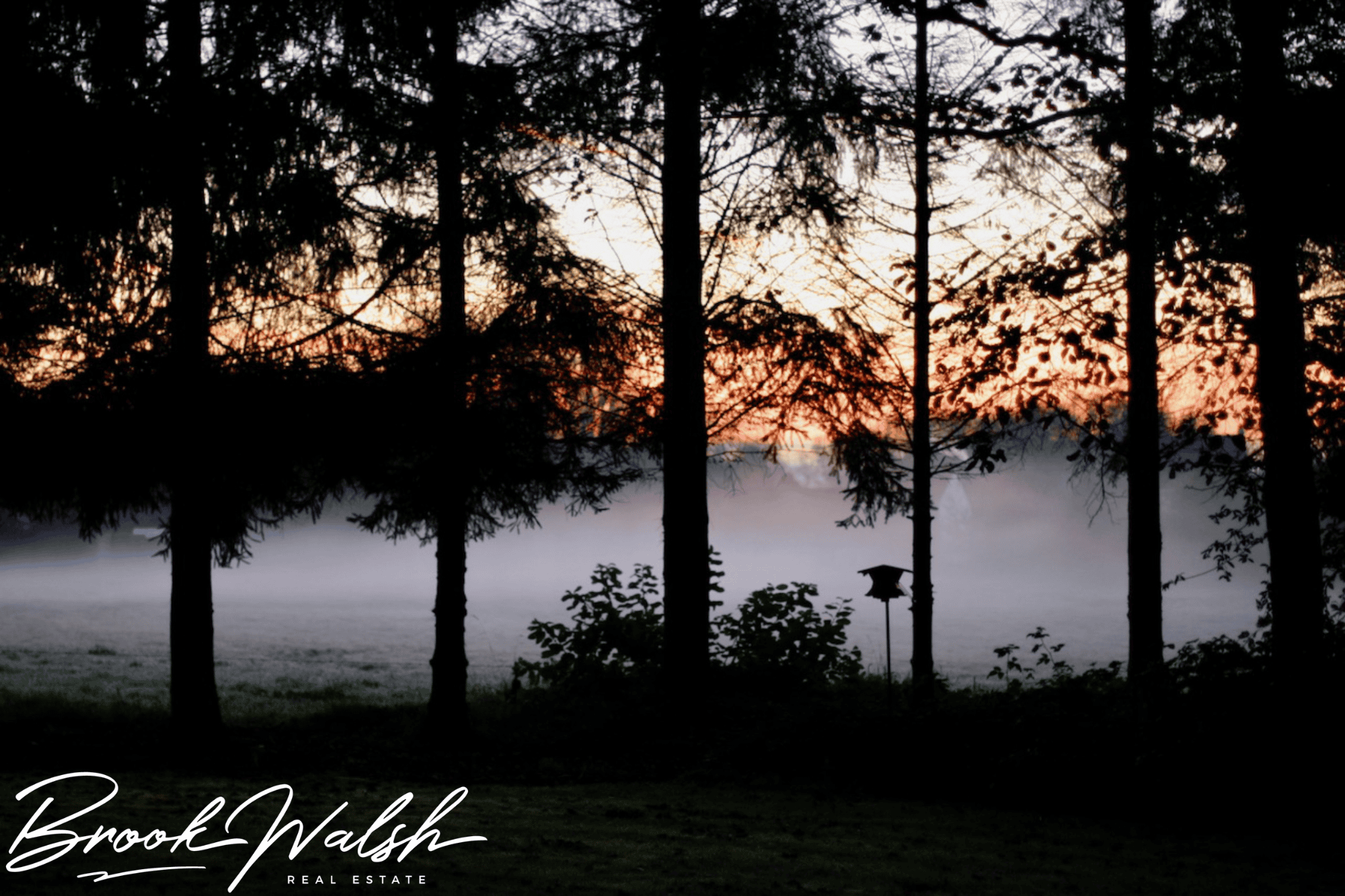Walloon Lake History
Introduction to Walloon Lake

Where is Walloon Lake?
Nestled in the northwest corner of Michigan's Lower Peninsula, Walloon Lake is a shimmering, glacial body of water known for its crystal-clear waters and quiet charm. Just a stone’s throw from Petoskey and Boyne City, it serves as a tranquil retreat for both tourists and locals alike. But beyond its beauty, Walloon Lake holds a deep and rich past waiting to be explored.
Why it’s Historically Significant
Walloon Lake isn’t just another pretty spot in Northern Michigan. It’s been a cultural and historical touchstone for centuries—long before modern maps existed. The area reflects the evolution of Michigan itself—from Indigenous stewardship to European colonization, to a roaring tourist haven in the 20th century. Walloon’s legacy is also immortalized in literature thanks to Ernest Hemingway, whose boyhood summers were spent here.
Indigenous Roots and Early Inhabitants
The Anishinaabe Presence
Long before any settlers arrived, Walloon Lake was part of the ancestral land of the Anishinaabe people—primarily the Odawa (Ottawa) and Ojibwe tribes. These Native communities depended on the lake for fishing, transportation, and ceremonial gatherings. They maintained a deep spiritual relationship with the land, practicing sustainable hunting and agricultural traditions.
Pre-European Era Life
Walloon Lake and its surrounding woods served as a vibrant ecosystem where Indigenous tribes lived in harmony with nature. Archaeological finds—like arrowheads and pottery—give us clues about their seasonal movements and semi-nomadic lifestyle. The name “Bear Lake,” an early name for Walloon, is thought to derive from Native folklore or observations of the area’s wildlife.
European Exploration and Settlement
French Fur Traders
The late 1600s saw French voyageurs enter the region, establishing fur trade routes and seasonal camps. They often traded with the Anishinaabe, exchanging beaver pelts for guns, tools, and textiles. This period marks the beginning of European influence around the lake.
Michigan’s Frontier Influence
By the 1800s, settlers began pushing further into Michigan’s wilderness. Logging and land acquisition dramatically changed the area. Walloon Lake’s dense forests became a target for the lumber industry, and soon cabins and docks lined the shores, replacing traditional Indigenous settlements.
The Naming of Walloon Lake

From Bear Lake to Walloon
Originally called Bear Lake due to the abundance of black bears in the region, the lake underwent a name change in the late 1800s. Several other lakes in Michigan shared the Bear Lake title, leading to confusion.
Origin of the Name “Walloon”
The name “Walloon” was likely chosen in honor of Walloon immigrants from Belgium. Some believe it was selected to evoke a European charm that could entice vacationers and land buyers. The moniker stuck, and with it, a unique identity was born.
The Arrival of the Railroad
The Grand Rapids & Indiana Railroad
The 1870s brought a pivotal change: the Grand Rapids & Indiana Railroad reached Walloon Lake. This made the lake accessible to tourists from Detroit, Chicago, and beyond. Wealthy families from the cities began purchasing land to build summer homes.
Tourism Boom Post-Railway
The convenience of train travel sparked a tourism explosion. Walloon Lake transformed from a quiet wilderness into a bustling resort destination. Luggage carts, passenger boats, and porters became a common sight.
Rise of the Resort Era (Late 1800s–1920s)
Victorian Cottages and Leisure
With its newfound popularity, Walloon Lake saw an influx of ornate Victorian-style cottages. These homes were built for relaxation and recreation, offering a rustic charm combined with modern comforts of the time.
The Steamship Connection
Steamships once crisscrossed the lake, ferrying guests and supplies. These boats added to the allure, and for many visitors, the journey across the lake was part of the vacation itself.
Hemingway’s Summers in Walloon Lake

Ernest Hemingway’s Boyhood Home
Perhaps Walloon Lake’s most famous former resident, Ernest Hemingway spent every summer of his youth here. His family owned a cottage—“Windemere”—built by his father in 1899. It still stands today.
Literary Impact on Walloon
Hemingway’s time at Walloon left an imprint on his writing. Short stories like "The Doctor and the Doctor’s Wife" and "Summer People" are directly inspired by his northern Michigan experiences. The lake is more than a setting—it's a character in his work.
Walloon Lake Village and Growth
Development Over the Decades
As the resort lifestyle blossomed, the community of Walloon Lake Village began to grow in earnest. In the early 20th century, small shops, a general store, and inns popped up to support the influx of seasonal visitors. The village became a central hub for both year-round residents and summer dwellers, creating a unique blend of small-town charm and vacation vibrancy.
Community Institutions
Churches, schools, and post offices formed the backbone of the village’s infrastructure. These institutions weren’t just functional—they were gathering places that fostered lifelong friendships and intergenerational bonds. Today, some of these buildings still stand as testaments to the community’s enduring spirit.
Economic Shifts Through the 20th Century
From Lumber to Lifestyle
In the 1800s, Walloon Lake’s economy was driven largely by logging. Towering white pines were felled and floated across the lake, feeding Michigan’s booming timber industry. But as the forests thinned, the economy shifted. Tourism and recreation replaced extraction as the primary economic drivers.
Changing Demographics
Post-WWII America saw dramatic changes. Walloon Lake, like much of the U.S., evolved with the times. The area attracted more retirees, second-home owners, and entrepreneurs, reshaping the demographics. While still seasonal, the lake began to see more year-round residents who valued its peace and natural splendor.
Environmental Conservation Efforts

The Walloon Lake Association
Founded in the early 20th century, the Walloon Lake Association & Conservancy has played a pivotal role in preserving the area’s beauty. They’ve advocated for clean water policies, habitat restoration, and land conservation, ensuring that development does not come at the lake’s expense.
Modern Preservation Practices
Today, residents and visitors alike are committed to sustainability. From shoreline restoration to invasive species control, Walloon Lake serves as a model for how community-led environmental efforts can maintain a natural gem for future generations.
Real Estate and Development History
Cottage Culture
Walloon Lake’s real estate story is one of transition—from humble log cabins to luxurious lakefront estates. Early “up north” cottages were simple structures designed for seasonal living, often without electricity or indoor plumbing.
Evolution of Lakefront Property
As interest in the lake grew, so did demand for waterfront property. The 1970s and 80s saw a surge in construction. Today, while some vintage cottages remain, they’re increasingly rare, replaced by modern homes that blend comfort with nature.
Historic Landmarks and Sites
The Hotel Walloon
Originally built in 1891 and fully restored in recent years, Hotel Walloon is a cornerstone of the village’s history. It once welcomed tourists arriving by rail and remains a symbol of refined hospitality.
Old Train Depot
Though no longer active, the Walloon Lake train depot is a historical treasure. It reminds visitors of the golden age of rail travel and how vital it was to the region’s development.
Education and Schools Through Time
Early Schoolhouses
Walloon’s first schoolhouses were modest one-room buildings that served multiple grades. These were often built by local families and doubled as community centers.
Modern Education System
Today, the area is served by larger, modern school districts. Yet the legacy of those early schools lives on, cherished in local lore and old photographs preserved in the historical society.
Festivals and Community Traditions

Local Celebrations
Events like the Walloon Lake Art Show, Independence Day boat parades, and summer concerts bring the community together each year. These traditions celebrate the lake's vibrant culture while honoring its heritage.
Legacy of Walloon Culture
From Hemingway-themed walking tours to conservation fundraisers, Walloon culture blends storytelling, environmental stewardship, and small-town Americana in a way that feels both nostalgic and forward-looking.
Walloon Lake in Popular Media
Film and Photography
The lake’s scenery has inspired countless artists, photographers, and even filmmakers. It’s a frequent subject of postcards, calendars, and regional promotions that celebrate Michigan’s natural wonders.
Books and Documentaries
Hemingway’s legacy alone draws literary interest, but several local historians have also penned books and essays documenting Walloon’s story, often supported by the Walloon Lake Historical Society.
Present-Day Reflections on History
Walking Tours and Museums
Interactive history tours and small local exhibits give visitors a sense of place. Maps of “Old Walloon” show where early settlers built their homes and where Hemingway once fished and canoed.
Historical Preservation in the 21st Century
Efforts continue to restore and maintain key historical sites. Whether it’s the upkeep of Windemere Cottage or public education initiatives, the community is deeply invested in protecting its roots.
FAQs about Walloon Lake History

1. Who were the first people to live around Walloon Lake?
A. The Anishinaabe people, primarily the Odawa and Ojibwe tribes, were the original stewards of the land and waters of Walloon Lake.
2. How did Walloon Lake get its name?
A. It was renamed from Bear Lake to Walloon Lake in the late 1800s, likely to honor Walloon immigrants from Belgium.
3. Did Hemingway really live on Walloon Lake?
A. Yes! Ernest Hemingway spent his summers at Windemere Cottage on Walloon Lake, built by his father in 1899.
4. What role did the railroad play in Walloon’s history?
A. The Grand Rapids & Indiana Railroad made Walloon Lake accessible to city dwellers, sparking a major tourism and real estate boom.
5. Are there still historic cottages on Walloon Lake?
A. A few original cottages remain, though many have been renovated or replaced. Some homes are preserved for their architectural and cultural value.
6. What’s being done to protect Walloon Lake today?
A. Groups like the Walloon Lake Association actively work on water quality, invasive species control, and responsible development to safeguard the lake's future.
Conclusion: Why Walloon Lake’s History Still Matters
Walloon Lake isn’t just a summer escape—it's a living chronicle of Michigan’s cultural, ecological, and literary heritage. From Native roots to resort retreats, from railroads to Hemingway, the lake has quietly shaped generations of stories. Preserving its past ensures that future visitors can continue to be inspired, just as Hemingway was over a century ago.
Posted by Brook Walsh on

Leave A Comment